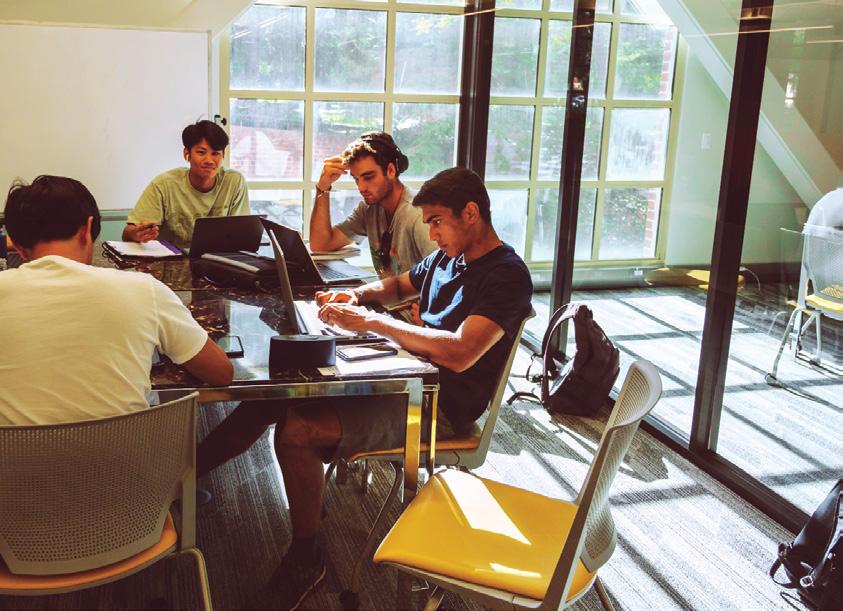
3 minute read
Re-imagined Library Electrifies Students, Faculty and Staff
When students and faculty members returned this fall, stunning changes to the William Knox Holt Memorial Library and Learning Center awaited them.
First-phase renovations have transformed the 90,000-square-foot library into a hightech, high-touch center that reflects how students live and learn today.
“Our old library was based on the assumption that its purpose was to store books and journals,” University Librarian Mary Somerville explains. “As we’ve moved from print publications to digital publications, we’re now able to provide access to scholarly knowledge from electronic resources which students and faculty prefer because they can access them anytime, any place.”
The new library design makes studying visible, with areas for individuals and groups, and a gathering place for exchanging ideas. Vibrant plush swivel chairs and single pods offer comfort and privacy, and a full-service Starbucks café soon will serve as a place to come and collaborate. The renovation project was made possible by generous gifts from alumni, foundations and friends of the university.
Students, faculty and staff members directly contributed and continue to influence the newly imagined library, most recently through TELL US, an initiative to capture and record feedback and recommendations. Visitors are able to provide input through two suggestion boxes on the first and second floors, a web form, by email (library@pacific.edu), or in-person.
Beginning in January 2016, Somerville says, students, faculty, staff, library representatives and campus planners together developed overarching goals for the facility, which were reviewed by members of the Academic Council Library Committee, the schools and college on the Stockton Campus, alumni and the Associated Students organization.
“Consensus was a shared vision moving forward,” Somerville says, with participatory design continuing throughout the development process. The various groups also met to review furniture design and other specific features.
Upon entering, visitors are welcomed into the Vertical Village, featuring a large atrium basking in natural light, where they can see both the first and second floors. Two help desks – one dedicated to technology and the other for general information – are located next to a digital kiosk that invites visitors to use a touch screen to explore the library’s new layout. On the second floor is the Center for Teaching and Learning, where curriculum is created, adjacent to the Student Academic Support Hub.

Students take advantage of the new seating and study facilities at the William Knox Holt Memorial Library and Learning Center.
Also on the first floor is The Cube – a large, eye-catching experimentation space with floor-to-ceiling glass walls – offering students the opportunity to create content using virtual reality, augmented reality, drone research technology, and 3D printing, in addition to the Media X digital gallery and editing rooms. A 100-inch touch screen offers pop-up lectures, presentations, and exhibitions.
One example of how The Cube technology is used, Somerville says, is the way biology and chemistry students use virtual reality to experience the human heart from the perspective of actually sitting or standing inside it. “Technology transforms the student experience,” she notes.
On the second floor is The Hub, where Student Academic Support Services – including research librarians, tutoring, writing, and a study hall – ensures academic success, Somerville says. The addition of a multi-faith meditation and prayer area is part of the second floor phase of construction that will open in January 2020.
Traditionally a library was a repository where the academic community could access information and then interpret it, she notes. But in the new library, “with open access to information, academics can expand the boundaries of knowledge and interpret it in a variety of formats, including multimedia presentations, virtual and augmented reality, which can then be disseminated globally,” she adds.
The final phase of improvements to the library is scheduled to begin in May 2020 with renovations to the library plaza to streamline traffic patterns into the north entrances. The water feature will be redesigned and relocated, Somerville says. The new plaza, located next door to the Conservatory of Music, will be used for events that bring the campus and community together.





